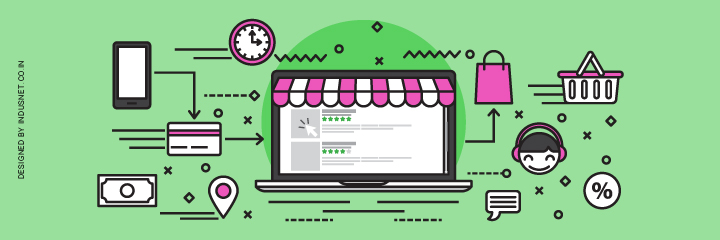
#TwitterChat: Digital-Led Product Innovation In Insurance
We organized yet Twitter Chat Session on Digital-Led Product Innovation In Insurance. As the discussion progressed we got some immensely relevant insights, trends, and learnings around #InsureTech & #DigitalSuccess Our esteemed panelists were Edmund Dilger and David Stubbs. In a highly competitive industry which is not known for digital innovations, changes in technology, product innovation, and newer business models are creating significant new opportunities for Insurance companies. Let’s us quickly go through this interesting discussion. @industech for me its personalisation — RightIndem (@RightIndem) April 19, 2018 Of course personalisation is a big step forward in terms of innovation in most industries including #insurance. However the current privacy concerns might slow it down a bit in near term. #digitalsuccess — Abhishek Rungta (@abhishekrungta) April 19, 2018 OK, bespoke in that specific risks for that person are covered, pooling for the risks. My worry about bespoke products is that we move away from pooling, which ends up with someone who has a claim being unable to afford insurance next year – the situation before Flood Re — Edmund Dilger (@EdmundDilger) April 19, 2018 The energy coming from the start up sector is incredible, and the growing sense that the industry will change is becoming self-fulfilling — RightIndem (@RightIndem) April 19, 2018 Really agree that there has been a big change in the last 2 years. Also some technical factors – becoming easier to use AI to analyse big datasets, so less "experience" based and more data based decision making — Edmund Dilger (@EdmundDilger) April 19, 2018 A3: Analytics, AI and ML enables predictive alerts and maintenance – which overall reduces the risk for the insured. Thus delivering continuous value through the lifetime of the cover, instead of just paying a claim when things go wrong. #DigitalSuccess — Abhishek Rungta (@abhishekrungta) April 19, 2018 When we talk to smart home device manufacturers one of the most interesting parts is the list of devices connected to wifi, and when they have last been used – proof that the claimant had the item. And also the opportunity to know that devices are working, and set as required — Edmund Dilger (@EdmundDilger) April 19, 2018 As they say People buy stories and not products, user experience is exactly doing this. It is helping insurers create an experience which entices a user to buy and a have a hassle free experience. #Insurtech founders are major drivers of this thought #DigitalSuccess — Syed Zainul Haque (Zain) (@syedzainulhaq) April 19, 2018 For far too long bad user experience has been accepted because legacy systems prevented anything better. Much like the banks. But we have passed the tipping point now, it has to improve to keep up with the customer's experience of other retail products — Edmund Dilger (@EdmundDilger) April 19, 2018 I would agree with your statement, but potentially disagree as to cause. Those systems would never have been signed off if the customer had figured in their thinking! — RightIndem (@RightIndem) April 19, 2018 A good amount of work has been done & within a couple of years we will see it’s global impact. #IoT will redefine the industry experience & if typical insurers lag behind then the todays customers i.e millennials wil do what they did to late digital laggers of #Fortune500 of 2005 — Syed Zainul Haque (Zain) (@syedzainulhaq) April 19, 2018 My favourite big data play at the moment is Concirrus in shipping. They can support underwriting and allow us to support or reject many claims – fabulous customer experience and a streamlined process for the insurer — RightIndem (@RightIndem) April 19, 2018 #blockchain is making its impact felt in every industry. I think with #P2P insurance coming up with companies like @Lemonade_Inc we are optimistic that it will bring a paradigm shift — Syed Zainul Haque (Zain) (@syedzainulhaq) April 19, 2018 Not impressed by P2P in underwriting, but not my areaAs a behaviorist though I find affinity claims groups an interesting tool against claims fraud — RightIndem (@RightIndem) April 19, 2018 That would make a very interesting loop back into underwriting – certain groups rarely claiming, but perhaps if members of a group were to discover that many claims have been made then they feel incentivised to claim as well? — Edmund Dilger (@EdmundDilger) April 19, 2018 Capital requirements and regulation are not going to go away. And in the consumer space we do have to remember that the product is not going to become exciting #digitalsuccess — Edmund Dilger (@EdmundDilger) April 19, 2018 Q9: How can #Insurance and #InsurTech collaborate to breed innovation at scale? A9: #Insurance companies can provide the solid regulatory framework and financial discipline, whereas #InsurTech can bring innovation, new products and experiences. And they collaborate through #API#PSD2 is a great step in this direction in banking industry#DigitalSuccess https://t.co/iOo2zGw1uV — Abhishek Rungta (@abhishekrungta) April 19, 2018 Insurance companies should not only test disruptive ideas, they also need to deliver business value at a lightning-fast pace by putting more focus on adjacent product innovations. Indeed a great session.We profusely thank all the participants for sharing their thoughts. We look forward to having such more power-packed session in the future on #DigitalSuccess








